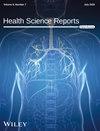The Association of Serum Level of TGF-β1 and Clinical Manifestations in Sickle Cell Anemia: A Case-Control Study
Abstract
Background and Aims
Sickle cell anemia (SCA) is an inherited red blood cell disorder resulting from the polymerization of Hemoglobin S. Acute vaso-occlusive crisis and multiple organ damage are the most common complications of SCA. Because of its multifunctional role in inflammation, endothelial dysfunction, and fibrosis, TGF-β1 could be involved in SCA development, which may explain a variety of symptoms associated with this disease. This study aimed to investigate the role of TGF-β1 as a noninvasive biomarker for predicting the types of SCA clinical manifestations and highlights the complication frequency in this group.
Methods
The level of TGF-β1 in serum was measured using the enzyme-linked immunosorbent assay (ELISA) method in 98 SCA patients and 98 healthy individuals without any history of hemoglobinopathies, who served as the control group. Moreover, a questionnaire was completed for each patient to determine the type of clinical symptoms they experienced. Analysis of data was conducted on SPSS 26 using descriptive statistics like frequency distribution and central tendency measures.
Results
The laboratory parameters including hemoglobin, red blood cell (RBC), hematocrit (HCT), mean corpuscular volume (MCV), and mean corpuscular hemoglobin (MCH) were lower in SCA patients compared to the control group, and white blood count (WBC), red cell distribution width-coefficient of variation (RDW-CV), platelet count, mean platelet volume (MPV), and lactate dehydrogenase (LDH) were higher in these patients. No significant correlation was observed between laboratory parameters and Transforming Growth Factor Beta 1 (TGF-β1) level (p > 0.05). The serum TGF-β1 level was higher in patients, but there was no significant correlation between TGF-β1 level and the type of clinical symptoms in these patients.
Conclusion
We observed a higher prevalence of certain complications in SCA patients in the Arab population of Khuzestan Province. There was no significant correlation between the clinical manifestation of SCA and TGF-β1.


 求助内容:
求助内容: 应助结果提醒方式:
应助结果提醒方式:


